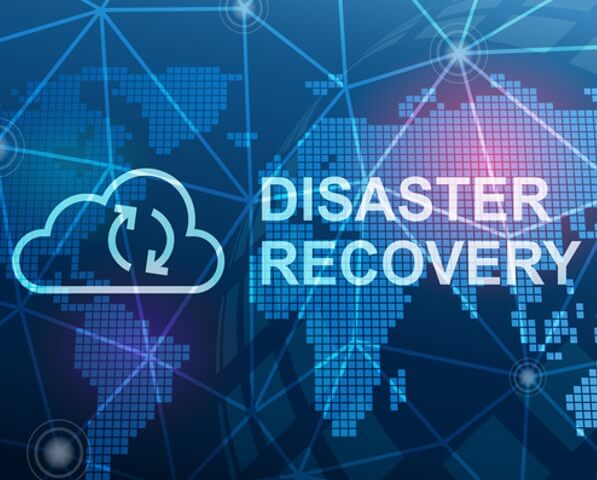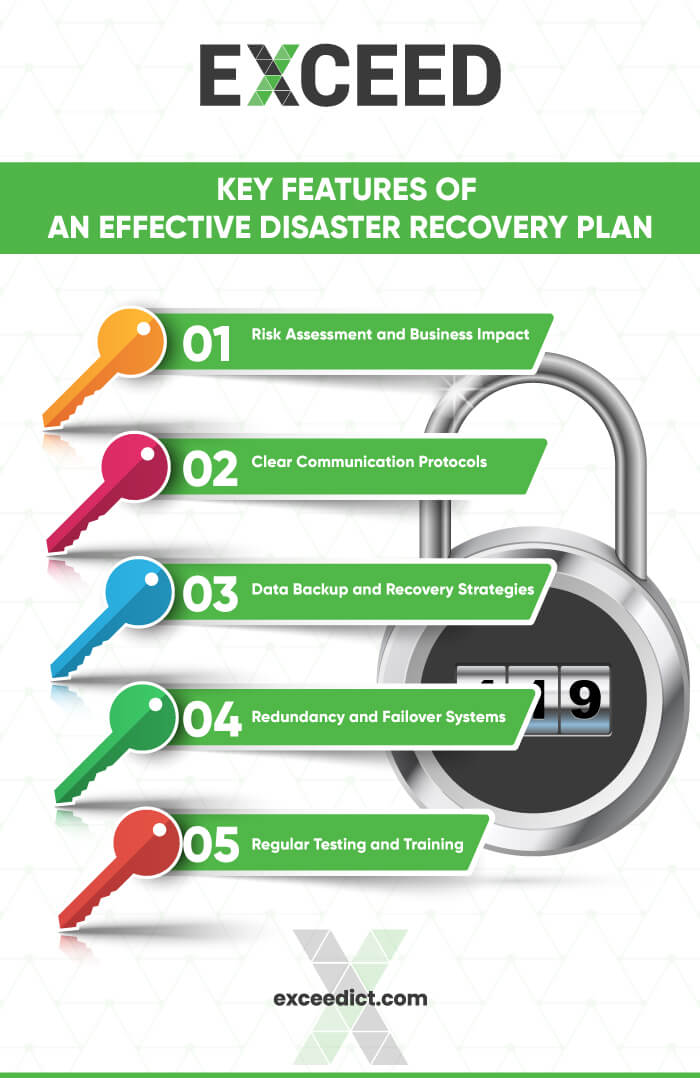
Disaster Recovery Plan Key Features

Disasters can strike unexpectedly, disrupting businesses and causing chaos. Having a well-structured disaster recovery plan (DRP) is crucial to ensure business continuity and minimise the impact of such events.
In this article, we’ll delve into what a disaster recovery plan is and highlight its key features, giving you a comprehensive understanding of its importance in today’s unpredictable world.
In an increasingly interconnected and technology-driven world, businesses face a multitude of risks that can disrupt their operations. From natural disasters to cyberattacks, the need for a well-crafted disaster recovery plan has become paramount.
Understanding Disaster Recovery Plans
>> Defining Disaster Recovery Plans
A disaster recovery plan outlines the strategies and procedures an organisation must follow to swiftly recover and resume its operations following a catastrophic event.
>> The Scope of DRPs
Disaster recovery plans encompass not only IT systems but also personnel, communication channels, and physical resources. This holistic approach ensures that all aspects of the business can be restored efficiently.
Key Features of an Effective Disaster Recovery Plan

>> Risk Assessment and Business Impact Analysis
Before crafting a DRP, a comprehensive risk assessment and business impact analysis are essential. This helps identify potential vulnerabilities and prioritise critical business functions.
>> Clear Communication Protocols
Effective communication is pivotal during a crisis. A DRP should establish clear lines of communication to ensure that all stakeholders are promptly informed and updated.
>> Data Backup and Recovery Strategies
Data is the lifeblood of modern businesses. Robust data backup and recovery strategies, including off-site backups, incremental backups, and data restoration procedures, must be integral to the plan.
>> Redundancy and Failover Systems
To minimise downtime, redundancy and failover systems should be in place. This involves duplicating critical systems and rerouting operations seamlessly in case of a failure.
>> Regular Testing and Training
A DRP is only effective if it’s well-practised. Regular testing and training sessions keep the team prepared and familiar with their roles during an actual emergency.
Creating Your Disaster Recovery Plan

Creating Your Disaster Recovery Plan
>> Assembling the DRP Team
Designating a team to lead the disaster recovery efforts ensures a coordinated and organised response.
>> Assessing Vulnerabilities and Risks
Identifying potential threats and vulnerabilities specific to the business is crucial for tailoring the plan effectively.
>> Developing Recovery Strategies
Crafting detailed strategies for different scenarios ensures that the organisation can navigate various crises confidently.
>> Documenting the Plan
Comprehensive documentation guarantees that every member of the team knows their responsibilities and procedures.
Implementing the Disaster Recovery Plan
>> Step-by-Step Execution
A well-structured plan includes a step-by-step guide for executing recovery procedures, leaving no room for confusion.
>> Monitoring and Adaptation
DRPs should be dynamic documents. Regular monitoring and updates ensure that the plan remains relevant as the business evolves.
Benefits of a Comprehensive DRP
>> Minimised Downtime
Quick recovery translates to minimal downtime, reducing financial losses and maintaining customer satisfaction.
>> Data Protection and Security
A DRP ensures data integrity and safeguards sensitive information, contributing to the organisation’s credibility.
>> Enhanced Customer Trust
The ability to continue operations even during a crisis enhances customer trust and loyalty.
Challenges in DRP Implementation
>> Financial Constraints
Implementing a robust DRP requires investment, but the cost is outweighed by the potential losses from unpreparedness.
>> Technological Complexities
Integrating diverse technological solutions and ensuring their interoperability can be challenging but is essential for a successful plan.
A disaster recovery plan is the bedrock of a resilient business. By proactively addressing potential risks and outlining strategies for recovery, organisations can navigate uncertainties with confidence. The key features of an effective DRP, including risk assessment, communication protocols, and regular testing, work in harmony to create a safety net that ensures continuity even in the face of adversity.
FAQs (Frequently Asked Questions)
 What is the primary purpose of a disaster recovery plan?
What is the primary purpose of a disaster recovery plan?
A disaster recovery plan’s primary purpose is to enable an organisation to recover swiftly and resume operations following a catastrophic event.
Are disaster recovery plans only for IT systems?
No, disaster recovery plans cover not only IT systems but also personnel, resources, and communication channels.
How often should a disaster recovery plan be tested?
Regular testing is crucial. Quarterly tests, along with yearly comprehensive drills, are recommended.
Can small businesses benefit from a disaster recovery plan?
Absolutely, disaster recovery plans are essential for businesses of all sizes to ensure business continuity.
You may also like to know more about
- How to Create an IT Disaster Recovery Plan Steps, Strategy, and More.
- 10 Vital IT Disaster Recovery Plan Steps for Safeguarding Your Business.
- IT Disaster Recovery Plan Objectives For Safeguarding Business Continuity.
- IT Disaster Recovery Plan Example To Ensure Business Continuity.
- Comprehensive IT and Network Disaster Recovery Plan Checklist.
- Disaster recovery plan checklist template for Small business.
Stay connected with EXCEED ICT
Stay connected with EXCEED ICT by joining our social networks (given at footer). Get the latest updates, news, and tips for enterprise device deployment. Follow us on Twitter, Facebook, and LinkedIn for the best enterprise device deployment solutions.
Help us to improve our enterprise by rating us on Google Maps. Your feedback and comments are valuable to us and will be used to make our services even better.



 What is the primary purpose of a disaster recovery plan?
What is the primary purpose of a disaster recovery plan?